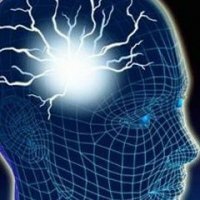Treatment of multiple sclerosis

Chronic progressive disease characterized by foci of multiple lesions is considered multiple sclerosis. With it, the central and less often peripheral nervous system is affected. The concept of multiple sclerosis according to the concept of plaque sclerosis, multiple sclerosis, spotty sclerosis, disseminated sclerosing peri-axial encephalomyelitis. For the first time this disease was described as early as 1868 by the French neurologist Jean Martin Charcot. Previously, it was believed that this affects women more often at the critical age of 20 to 40 years. However, now this disease has become quite frequent among men, as well as people in the second half of life.
Treatment measures
A patient with multiple sclerosis should be constantly observed by a neurologist. The goal of treating multiple sclerosis:
- is to suppress and prevent exacerbations;
- slow the progression of the pathological process.
To stop the exacerbation of this disease, pulse therapy with metipredom - methylprednisolone 500 to 1000 mg in 500 ml of 9% sodium chloride chloride per day( 4 to 7 days) is more often used. If the effect of this treatment is not attained, after completion metipred is already administered orally-1 mg-kg per day in a day and with a gradual dose reduction( within one month).Before treatment, all contraindications for the use of glucocorticoids should be eliminated. In the process of the treatment itself, it is necessary to add therapy with the accompanying potassium preparations and gastroprotectors. In case of exacerbations, plasmapheresis should be carried out - 3-5 sessions, blood substitution up to one and a half liters with the introduction of the metipred drug from 500 to 1000 mg.
The most important direction of pathogenetic treatment is the modulation of the very course of this disease by preventing exacerbations, stabilizing the patient's condition and possibly preventing the transformation of remitting diseases into progressive diseases. Components of pathogenetic treatment - immunomodulators and immunosuppressants, which have the common name Pitris - are drugs that can change the course of the disease. Use of immunomodulators containing interferon-beta interferon 1-A for PC administration. Refife-22, or Refife-44.Beta interferon 1-A for the IM administration of Avonex. Glatiramer acetate - copaxone. These drugs change the balance of immunity - an anti-inflammatory response. The second line of drugs is immunosuppressants. They block the immune response - santron. Suspend the penetration of lymphocytes through the barrier of blood-brain-natalizumab. The clinical efficacy of the immunomodulator is evaluated once every three months. But it is recommended to check MRI annually. When beta interferons are used, blood tests, such as leukocytes and platelets, should be performed regularly. Do functional tests of the liver - bilirubin, AST, ALT.In addition to mitoxantrone and natalizumab in the immunosuppressant group, azathioprine and cyclosporine are sometimes used.
The goal of symptomatic treatment is to stop and reduce the underlying manifestations of the disease.
To suppress chronic fatigue, antidepressants - fluoxetine and amantadine, as well as agents that stimulate the CNS - cerebrolysin are used. In the case of translational tremor, nonselective adrenoblockers of beta-propranololone are used. Barbiturates are primidone and phenobarbital. If intentional tremor, then clonazepam and carbamazepine. When the tremor is rest, then levodopa. To suppress paraxism symptoms, use carbamazepine or barbiturates and anticonvulsants. Depression is well treated with amitriptyline, a tricyclic antidepressant. But one must also remember the ability of amitriptyline to delay urination. Pelvic damage is caused by a change in the nature of urination itself. If urinary incontinence occurs, treatment with anticholinergics, antagonists of calcium channels is performed. When the emptying is disturbed, muscle relaxants are prescribed. Stimulators of activity reduction( detrusor), cholinergic drugs and intermittent catheterization also treat the bladder.



